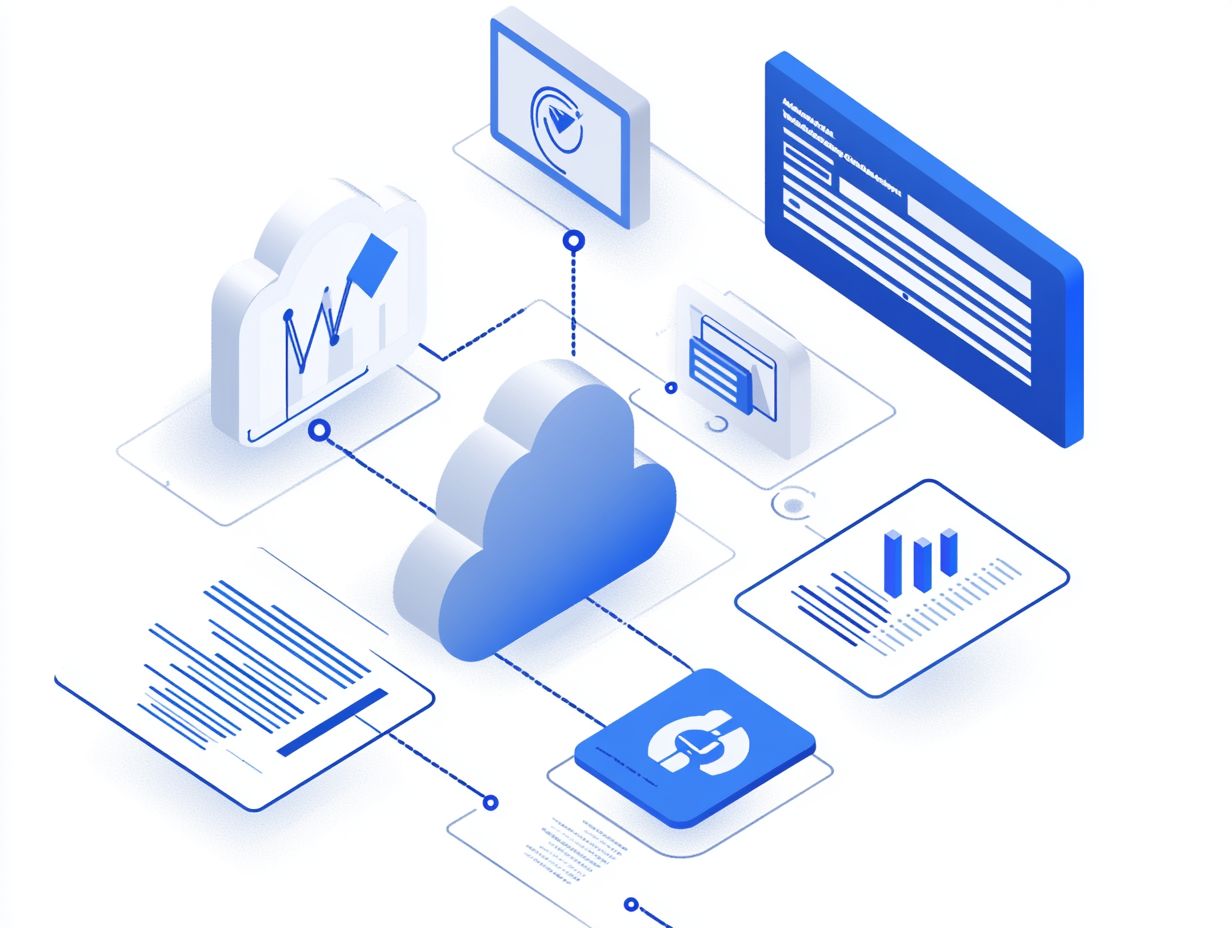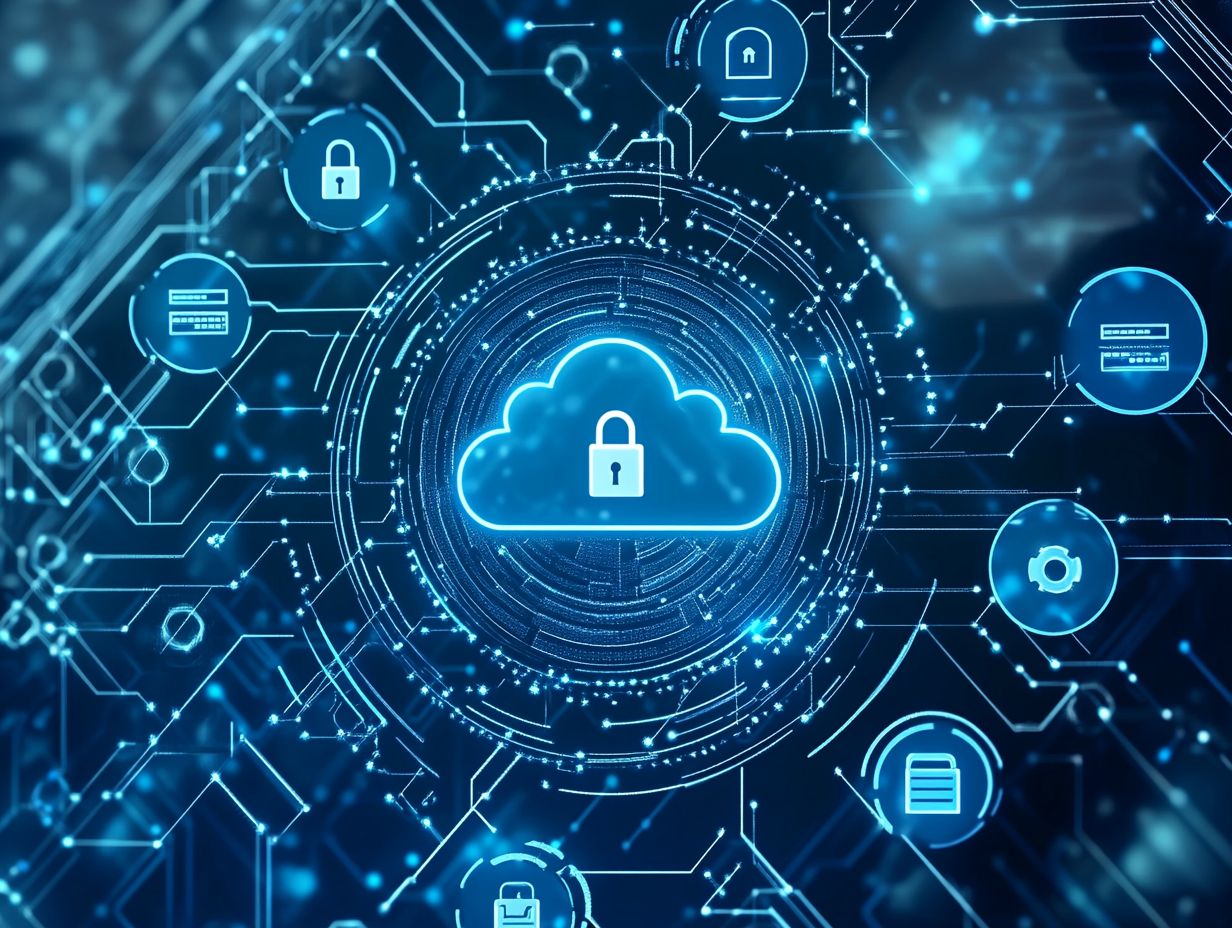5 Essential Cloud Security Metrics to Track
In today s digital landscape, protecting sensitive data is crucial for businesses relying on cloud services. Act now to protect your business!
To enhance cloud security effectively, it s vital to understand key metrics. This article discusses five essential measures:
- Unauthorized access attempts
- Successful breaches
- Data loss incidents
- Response times
- Compliance with industry standards
Each measure provides valuable insights into vulnerabilities, helping you develop strategies for improvement.
By monitoring these indicators, organizations can strengthen their security posture and safeguard their assets against ever-evolving threats.
Contents
- Key Takeaways:
- 1. Number of Unauthorized Access Attempts
- 2. Number of Successful Breaches
- 3. Percentage of Data Loss Incidents
- 4. Response Time to Security Incidents
- 5. Compliance with Industry Standards
- Why Are These Metrics Important for Cloud Security?
- How Can These Metrics Help Identify Vulnerabilities?
- What Are the Common Causes of Unauthorized Access Attempts?
- How Can a Business Improve Response Time to Security Incidents?
- What Are the Consequences of Non-Compliance with Industry Standards?
- How Can a Business Use These Metrics to Improve Overall Cloud Security?
Key Takeaways:

Monitor unauthorized access attempts to spot security weaknesses quickly! Track successful breaches to evaluate security effectiveness and identify improvement areas. Closely monitor data loss incidents and implement measures to reduce the risk of breaches.
The number of unauthorized access attempts is a critical cybersecurity measure that reflects your organization s ability to fend off evolving cyber threats.
This metric ensures that potential intrusions are detected and addressed swiftly, enhancing incident management and threat detection capabilities.
These metrics highlight vulnerabilities in your defenses and offer insights into potential trends and attack methods that malicious actors might exploit. To effectively address these risks, consider following the 5 steps to secure your cloud environment.
By leveraging AI-driven analytics, you can monitor incidents continuously, identifying patterns that may elude human analysts. This data-driven approach allows for proactive cybersecurity measures rather than merely reactive ones.
Analyzing historical breach attempts can refine your incident response protocols, equipping your team to anticipate and mitigate future threats more effectively. Ultimately, this approach strengthens your overall security framework.
2. Number of Successful Breaches
The number of successful breaches serves as a key indicator of your organization s cybersecurity effectiveness, revealing vulnerabilities in your security measures and highlighting the need for ongoing improvements.
Factors such as inadequate employee training, outdated software, and lapses in compliance with industry regulations may contribute to these failures.
A notable example is the Equifax breach in 2017, where a failure to patch a known vulnerability exposed sensitive data for millions. This incident prompted many corporations to reevaluate their data protection strategies, implementing stricter access controls and conducting regular security audits against similar threats.
These enhancements aim to protect sensitive information and ensure compliance with evolving regulations.
3. Percentage of Data Loss Incidents

The percentage of data loss incidents is vital for assessing your organization s cybersecurity health, revealing weaknesses in your data protection strategies and recovery processes.
These incidents can vary from accidental deletions and hardware failures to cyber-attacks and natural disasters, each posing significant implications for business operations. For instance, losing critical customer data can erode trust, while operational disruptions can lead to financial losses.
This is why incident classification is essential; identifying specific threats enables tailored responses.
By analyzing recovery metrics, you can evaluate how efficiently you restore lost data and determine which measures require strengthening. This process ultimately enhances your preparedness strategies, allowing you to mitigate the impact of potential future data breaches.
4. Response Time to Security Incidents
Responding quickly to security threats is crucial! Response time to security incidents is a key measure that showcases how ready you are to counter threats. This measure affects how well you manage incidents and how strong your cybersecurity is.
When you respond swiftly, you can significantly reduce the severity of breaches, protecting sensitive data and preserving stakeholder trust. Key metrics like Mean Time to Detect (MTTD) how long it takes to recognize a threat and Mean Time to Resolve (MTTR) how long it takes to fix an issue are crucial for evaluating your organization s efficiency in addressing threats.
Tracking these metrics helps you find weak spots in your security. Implementing comprehensive employee training programs and refining security protocols are essential strategies, including 5 strategies for effective cloud security management, for streamlining your response process.
This proactive approach not only equips your staff with the necessary skills to assess and react promptly but also fosters an organizational culture that emphasizes cybersecurity awareness. Take a moment to review your response times today!
5. Compliance with Industry Standards
Compliance with industry standards is vital for demonstrating your commitment to cybersecurity best practices. Adhering to regulations such as GDPR, CCPA, and NYDFS Cybersecurity Regulation protects you from potential legal issues and enhances your reputation in the marketplace.
These regulations provide a robust framework for safeguarding sensitive data and establishing trust between your organization and your clients. By weaving compliance into your cybersecurity strategies, you can proactively mitigate risks and respond more effectively to emerging threats.
The consequences of non-compliance can be severe, leading to substantial fines and significant reputational damage. This highlights the importance of continuous compliance monitoring.
This diligent oversight enhances your security measures while fostering a culture of accountability within your organization, ultimately strengthening your overall security posture. Take a moment to evaluate your compliance practices!
Why Are These Metrics Important for Cloud Security?

Understanding cybersecurity metrics is essential for your cloud security strategy. These metrics offer valuable insights into your organization’s security posture, enabling you to take proactive measures against cyber threats and enhance your incident response capabilities, particularly when considering 5 essential IaaS security features.
These metrics act as critical indicators, helping you identify vulnerabilities and potential breaches before they escalate. By continually monitoring key performance trends and conducting historical analyses, you can adapt your security in real-time, considering 5 key indicators for cloud provider selection.
This dynamic approach emphasizes ongoing improvement. The lessons learned from past encounters with cyber threats should directly inform your future strategies, ensuring your cloud security measures evolve alongside emerging risks. For instance, consider the 5 security features to look for in cloud storage as you review your cloud security metrics regularly!
How Can These Metrics Help Identify Vulnerabilities?
Cybersecurity metrics are essential for pinpointing vulnerabilities within your organization’s network security framework. They allow for effective incident management and robust cybersecurity strategies.
By examining specific metrics like the number of unauthorized access attempts and the frequency of successful breaches, you can uncover valuable insights into your security posture and learn about must-know cloud security frameworks.
For example, a sudden surge in unauthorized login attempts might signal a potential threat, prompting an immediate investigation. Consistent monitoring and detailed analysis of these metrics enable you to implement proactive security measures.
This ongoing assessment not only bolsters your overall cybersecurity strategy but also gives the power to you and your stakeholders to make informed decisions about investing in new technologies and staff training. Don t wait start enhancing your security today!
Unauthorized access attempts often stem from system vulnerabilities and a lack of cybersecurity awareness among employees.
Shortcomings in intrusion detection systems also play a role, highlighting the need for a comprehensive cybersecurity strategy.
Among these vulnerabilities, weak passwords present a significant risk. Many individuals still opt for easily guessable combinations or recycle credentials across various platforms.
Phishing attacks remain a favored tactic for cybercriminals, luring unsuspecting employees with deceptive emails and links.
Outdated software also exacerbates the issue; without regular updates and patches, systems remain exposed to exploitation.
To combat these threats, effective training for employees is essential. This ensures that staff are well-equipped to identify potential risks.
Organizations need to continuously improve their security measures, adapting to the ever-evolving landscape of cyber threats.
How Can a Business Improve Response Time to Security Incidents?

Improving your response time to security incidents is essential for minimizing damage and enhancing your incident management strategy.
This can be accomplished by implementing effective performance indicators and comprehensive employee training programs.
You can refine ways to identify and categorize threats to ensure they are promptly identified, allowing for a quicker response.
By leveraging analytics powered by artificial intelligence, you can significantly enhance your real-time threat detection capabilities.
This enables your team to anticipate potential breaches before they escalate.
Fostering a culture of cybersecurity awareness among your employees is crucial. When your staff is equipped with the knowledge to recognize and report suspicious activities, they become active participants in preventing incidents.
This teamwork boosts your organization’s strength and empowers employees to play a vital role in cybersecurity.
What Are the Consequences of Non-Compliance with Industry Standards?
Failing to comply can cost your organization dearly, and it s essential to act now to protect your future.
Non-compliance with industry standards can lead to significant consequences for you and your organization, including legal troubles, hefty financial penalties, and damage to your reputation.
This reality highlights the critical need for robust cybersecurity and regulatory compliance measures.
For example, if your company fails to comply with the General Data Protection Regulation (GDPR), you could face fines as high as 4% of your annual global turnover a staggering sum that could stifle growth and innovation.
The aftermath of data breaches can severely compromise your organization s security, eroding trust and making you an appealing target for future attacks.
This loss of public confidence complicates your incident response capabilities, as stakeholders become increasingly skeptical of your ability to protect sensitive information.
On the flip side, organizations that embrace compliance often discover that this commitment strengthens their defenses and equips them with the agility to respond effectively to emerging threats.
How Can a Business Use These Metrics to Improve Overall Cloud Security?
Leverage cybersecurity metrics to boost your cloud security. It’s crucial to identify weaknesses, track performance trends, and improve how you handle security incidents, including monitoring key metrics in hybrid cloud.
Examine key data points like incident frequency, response times, and user activity patterns. This helps target specific vulnerabilities with effective solutions.
Use these insights to strengthen your cloud security strategies. Protect sensitive data and build customer trust to thrive in a secure environment.
Frequently Asked Questions
What are the 5 essential cloud security metrics to track?
The 5 key metrics for evaluating cloud performance include network security, user access and authentication, data protection, security incidents and events, and compliance and audits.
Why is it important to track these metrics?
Tracking these metrics helps organizations maintain cloud security and understand 5 important cloud cost management metrics. This identification of vulnerabilities and risks allows for timely remediation and prevention of incidents.
How can network security be tracked?
Monitor network traffic and analyze anomalies. Regular vulnerability assessments and penetration testing are also crucial.
What are some ways to track user access and authentication?
Implement multi-factor authentication and monitor user login activity. Regularly review and update user access permissions.
How can data protection be measured and tracked?
Measure data protection by monitoring encryption, conducting regular backups, and implementing access controls.
What is the role of compliance and audits in tracking cloud security metrics?
Compliance and audits ensure adherence to industry standards. Regular assessments help address any non-compliance issues.






